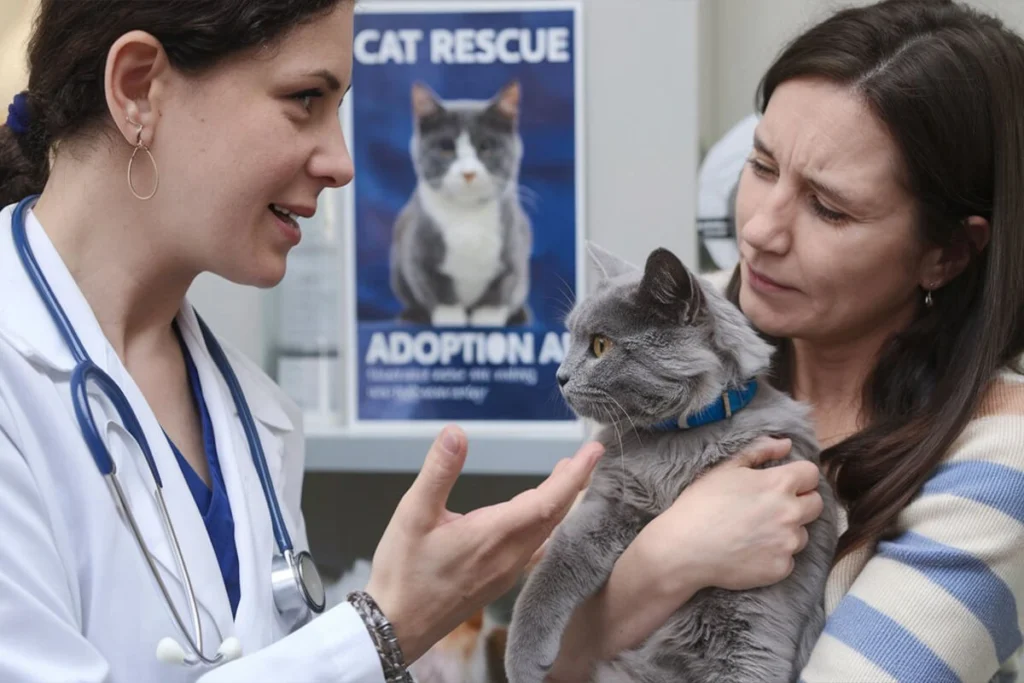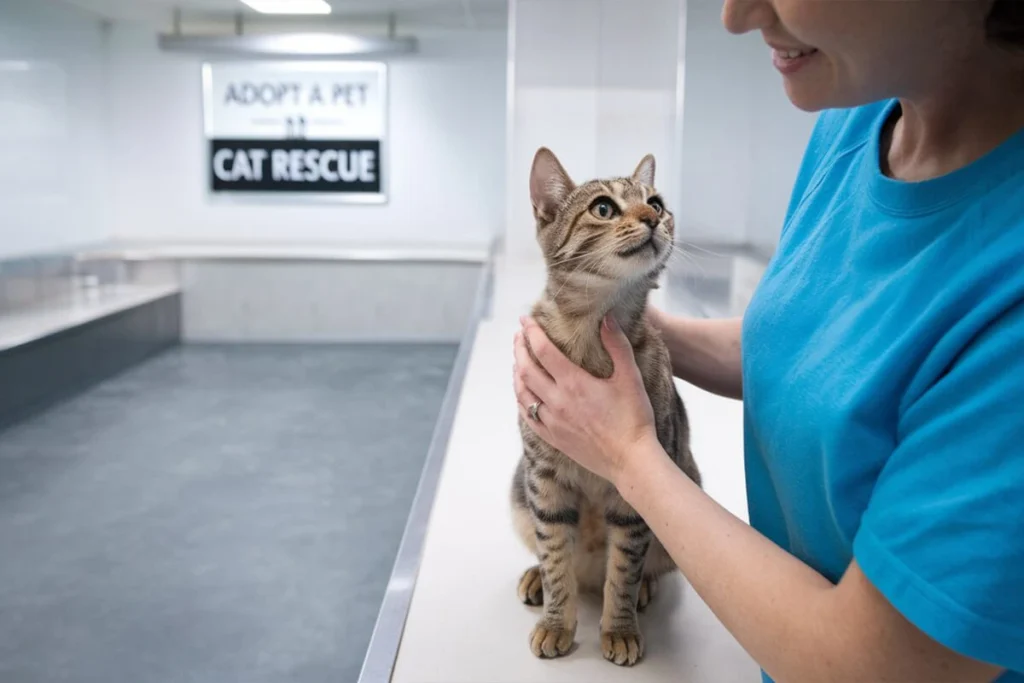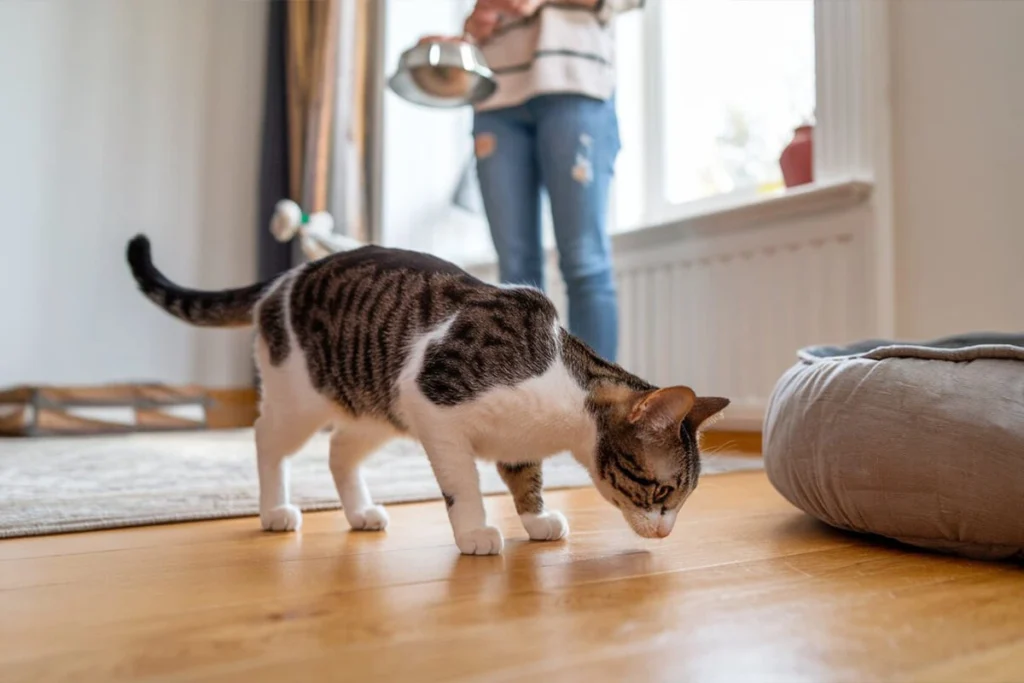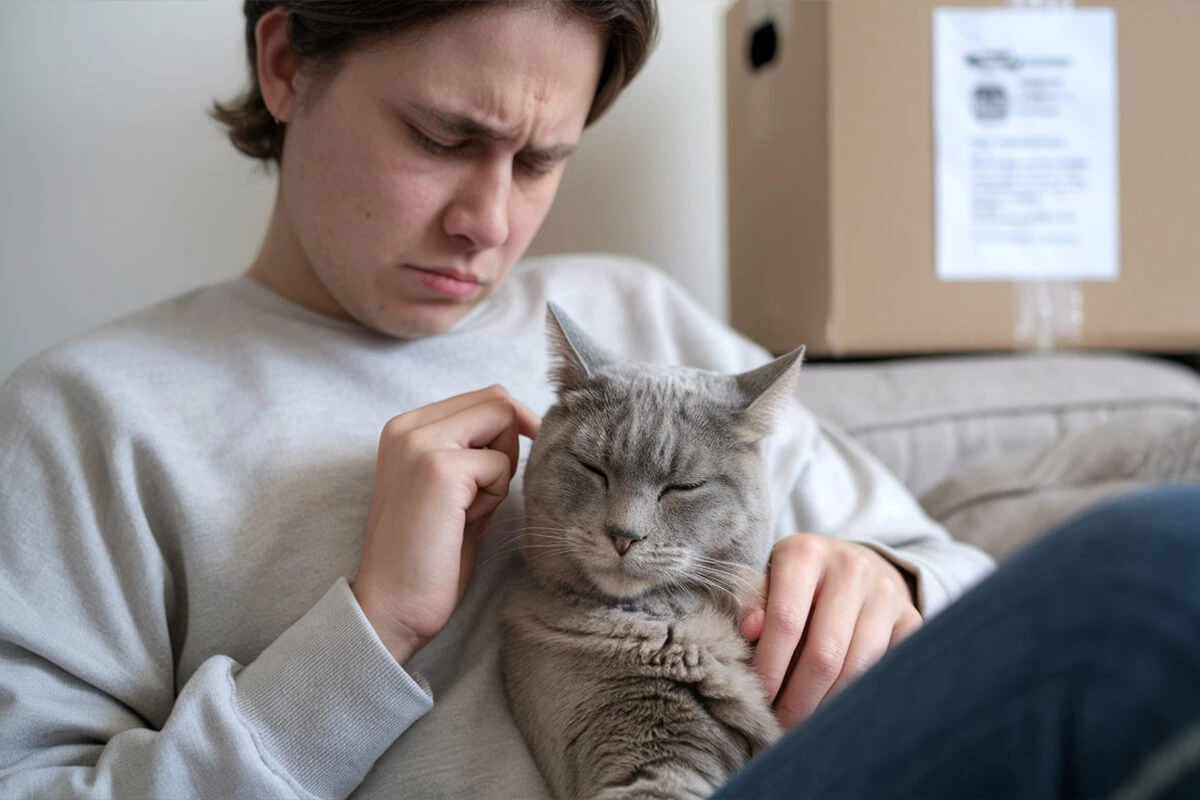Rehoming a cat is never an easy decision, but sometimes it becomes necessary for the well-being of both the pet and the owner. Understanding the acceptable reasons to rehome a cat helps ensure that the process is done responsibly and ethically. Whether due to severe allergies, financial struggles, or behavioral challenges, finding a new home for a beloved pet should always prioritize the cat’s safety and happiness.
Many pet owners struggle with guilt when considering rehoming, but in some situations, it is the most compassionate choice. Instead of making a rushed decision, responsible cat rehoming involves evaluating all possible solutions, seeking expert advice, and ensuring the new home meets the cat’s needs. By following ethical pet rehoming practices, owners can find a loving and secure environment where their cat can thrive.
This guide will explore the key reasons why rehoming might be necessary, offer expert tips on finding a suitable home, and explain how to surrender a cat responsibly. Whether you need to rehome a cat due to allergies, life changes, or behavioral concerns, this article will provide clear steps to help you navigate the process with care and confidence.
When is Rehoming a Cat the Right Decision?
Severe Allergies or Medical Conditions
Living with a cat becomes extremely difficult when severe allergies or medical conditions affect a pet owner or a family member. Some people develop intense allergic reactions, including constant sneezing, breathing difficulties, and skin irritations, making daily life uncomfortable. In cases where allergy medications fail to provide relief, rehoming a cat may become the only viable option.
Beyond allergies, some medical conditions make it unsafe or impossible to keep a pet. People with weakened immune systems, chronic respiratory illnesses, or conditions that require strict hygiene may struggle to maintain a safe environment with a cat. Doctors sometimes advise patients to remove pets from the home to prevent serious health complications. While rehoming a beloved pet feels heartbreaking, prioritizing human health and ensuring the cat finds a loving new home allows for the best possible outcome.
Behavioral Issues Beyond Management
Some cats develop behavioral problems that create a stressful or even dangerous living situation. Excessive aggression, destructive scratching, or severe litter box issues can make it difficult for an owner to provide proper care. While many behavioral challenges can be resolved with patience, training, and expert guidance, some issues persist despite every effort.
Feline behavior specialists can help diagnose the root cause of aggression, anxiety, or destructive tendencies. However, if a cat continues to pose a threat to other pets, children, or family members, rehoming might be the most responsible choice. Finding a home with an experienced cat owner or someone better equipped to handle specific behavioral needs ensures the cat receives the proper care and attention it requires. Responsible cat rehoming in these cases prevents harm and provides the best chance for the cat to thrive in a more suitable environment.
Drastic Life Changes
Unexpected life changes sometimes make it impossible for an owner to keep their cat, even when they love their pet deeply. Financial hardships, job loss, or relocation to pet-restricted housing force some pet owners into heartbreaking decisions. When someone loses the ability to afford food, veterinary care, or a stable home, rehoming a cat becomes a responsible and necessary step.
Major life transitions, such as divorce, military deployment, or severe illness, also impact a person’s ability to care for a pet. Some people move in with family members who have allergies, while others experience physical limitations that prevent them from providing proper care. In these situations, rehoming a cat ensures the pet does not suffer due to circumstances beyond the owner’s control. Finding a new home through ethical pet rehoming methods allows the cat to receive the love, attention, and stability it deserves.
No one wants to rehome a pet, but in some cases, it becomes the best and only option. Understanding when to rehome a cat and following responsible rehoming practices ensures that both the pet and the owner move forward in a way that prioritizes well-being and long-term happiness.
Responsible and Ethical Cat Rehoming
Consulting Veterinary and Feline Behavior Specialists
Before making the final decision to rehome a cat, responsible pet owners should consult a veterinarian and a feline behavior specialist. Sometimes, medical issues cause behavioral problems that make it seem like rehoming a cat is the only option. Undiagnosed illnesses, chronic pain, or neurological conditions can lead to aggression, excessive meowing, or litter box avoidance. A veterinary consultation helps determine whether a medical treatment plan could resolve these problems and allow the cat to stay in its current home.

Feline behavior specialists provide expert advice for cats struggling with anxiety, destructive behaviors, or aggression. If a cat constantly hides, refuses to use the litter box, or reacts aggressively toward people or other pets, a specialist can assess the situation and recommend solutions. Many behavioral issues improve with environmental changes, structured training, or calming techniques. Instead of rehoming a cat immediately, owners should explore every possible solution to correct behavioral challenges. However, if all expert advice and interventions fail, rehoming a cat responsibly ensures it finds a more suitable environment.
Seeking Help from Cat Rescue Organizations
Rehoming a cat responsibly requires careful planning, and cat rescue organizations play a crucial role in this process. Instead of surrendering a cat to just anyone, working with a reputable rescue group ensures the pet finds a loving and permanent home. Many cat rescue organizations have experienced volunteers who carefully screen potential adopters, reducing the risk of the cat ending up in an unsafe environment.
Rescue groups also provide temporary housing, veterinary care, and rehabilitation for cats before placing them in new homes. Some organizations specialize in rehoming cats with medical needs, senior cats, or cats with behavioral challenges, making them an excellent resource for responsible rehoming. Contacting a local rescue organization allows owners to explore ethical pet rehoming options that prioritize the cat’s long-term well-being.
Considering Foster Homes for Cats
Finding a permanent home takes time, and sometimes, an owner needs a temporary solution before rehoming a cat. Foster homes provide a safe, loving environment where a cat can stay until a suitable adopter is found. Many foster-based rescues work with owners to ensure the cat transitions smoothly into a new home without unnecessary stress.
Choosing a foster home allows owners to stay involved in the rehoming process. Instead of placing a cat in a shelter with an uncertain outcome, a foster home provides stability and care while the search for a permanent family continues. Foster homes also benefit cats that need additional socialization or medical care before adoption.
Responsible cat rehoming takes effort, patience, and careful planning. Instead of rushing the process, consulting experts, working with cat rescue organizations, and considering foster homes ensure that every cat finds a home where it can thrive.
Safe Ways to Find a New Home for Your Cat
Screening Potential Adopters
Finding a responsible and loving home is one of the most important steps when rehoming a cat. Not everyone who wants to adopt a pet can provide the care, stability, and commitment required for a lifetime. Before handing over a cat, take the time to screen potential adopters to ensure they can meet the pet’s needs.

Start by asking key questions about their experience with cats, current living situation, and long-term plans for pet care. A responsible adopter should live in pet-friendly housing, have the financial stability to cover food and veterinary expenses, and understand the responsibilities of owning a cat. If possible, visit their home or request photos to ensure it’s a safe environment.
Rehoming a cat should not be a rushed decision. One of the acceptable reasons to rehome a cat is to ensure the pet moves to a better-suited home where it will receive proper care. Finding an adopter who is patient, knowledgeable, and prepared for pet ownership prevents the cat from facing future abandonment or neglect. Responsible screening helps protect the cat’s well-being and ensures a smooth transition into a new home.
Using Trusted Rehoming Platforms
Rehoming a cat requires careful planning, and using a reputable rehoming platform helps connect pets with responsible adopters. Instead of posting general online ads or giving a cat away to a stranger, work with established pet adoption networks that prioritize animal welfare. Websites like Adopt-a-Pet and Rehome by Petfinder provide a structured process that includes adopter applications, background checks, and adoption agreements.
These platforms help match cats with families that are prepared to care for them long-term. They also reduce the risk of rehoming a cat to someone who may neglect or abandon it later. Many rescue organizations offer rehoming assistance, including temporary foster care and adoption events, to ensure every cat finds a loving home.
Using a trusted rehoming platform ensures that the process remains safe, ethical, and focused on the cat’s best interests. One of the acceptable reasons to rehome a cat is recognizing that another home can provide better care and stability. However, that new home must be carefully selected to ensure the cat’s long-term safety and happiness.
Avoiding Unsafe Rehoming Methods
Some pet owners, desperate to find a new home quickly, make the mistake of giving their cat away for free or posting rehoming ads without screening potential adopters. Unfortunately, this can lead to unsafe situations where the cat may end up neglected, abandoned, or in harm’s way.
Responsible cat rehoming means taking steps to ensure the pet’s future well-being. Avoid handing over a cat to anyone who expresses interest without verifying their ability to provide proper care. Never leave a cat outside in hopes that someone will take it in, as this puts the animal at serious risk of injury or starvation. Instead, seek help from reputable rescue organizations, trusted rehoming platforms, and screened adopters.
One of the acceptable reasons to rehome a cat is when an owner can no longer provide the necessary care. However, ethical pet rehoming means finding a stable, loving home through safe and responsible methods. Taking the time to rehome a cat properly prevents future suffering and ensures the pet’s well-being in its new home.
Surrendering a Cat to a Shelter: When and How?
Understanding Cat Rehoming Policies
Before surrendering a cat to a shelter, pet owners should understand the policies and procedures involved in the rehoming process. Every shelter operates differently, with specific requirements for accepting surrendered pets. Some shelters take in cats regardless of their age, health, or behavior, while others have limited space and only accept animals based on urgency or adoptability.

Many shelters require an appointment for pet surrender and may charge a fee to cover veterinary care, food, and housing. Some organizations have waiting lists due to high intake rates, so planning ahead ensures a smoother process. Responsible cat rehoming means choosing a shelter that prioritizes adoption efforts rather than placing animals at risk of euthanasia due to overcrowding.
One of the acceptable reasons to rehome a cat is ensuring it receives proper care when an owner can no longer provide for it. Instead of abandoning a pet or giving it away to an unknown person, surrendering a cat to a reputable shelter ensures that trained professionals handle the rehoming process with the cat’s well-being in mind.
Choosing the Right Animal Shelter
Not all shelters offer the same level of care, so selecting the right facility plays a crucial role in responsible cat rehoming. Some shelters have high adoption rates and focus on placing cats in loving homes, while others struggle with limited resources. Researching local shelters helps pet owners find an organization that aligns with ethical rehoming practices.
No-kill shelters and cat rescue organizations provide a safe environment where cats receive medical attention, socialization, and behavioral support before being adopted. These shelters often have foster programs that help cats transition smoothly into new homes. Municipal shelters, on the other hand, may face overcrowding, which increases the risk of euthanasia for animals that are not adopted quickly.
When considering acceptable reasons to rehome a cat, pet owners should ensure the shelter they choose follows ethical guidelines for adoption. Visiting the facility, asking about their rehoming success rates, and understanding their policies give owners peace of mind that their cat will receive the care it deserves. Choosing a shelter with strong adoption programs increases the chances of finding a permanent home for the cat.
Preparing Your Cat for Surrender
Surrendering a cat to a shelter requires preparation to ensure the transition is as stress-free as possible. A well-prepared cat has a higher chance of getting adopted quickly, as shelters prioritize animals that are healthy, socialized, and up-to-date on vaccinations.
Before bringing a cat to a shelter, schedule a veterinary checkup to confirm its health status. Providing medical records, vaccination history, and information about the cat’s diet, personality, and habits helps shelter staff find the best possible match for adoption. Cats that arrive with complete health records often receive faster placement in new homes.
Reducing stress during the transition also plays a key role in responsible cat rehoming. Using a familiar blanket, toy, or even a piece of clothing with the owner’s scent can provide comfort during the adjustment period. Some shelters allow owners to stay with their cat for a short time to ease separation anxiety.
One of the acceptable reasons to rehome a cat is ensuring it finds a safe and stable home when circumstances prevent an owner from providing proper care. Preparing a cat for surrender increases its chances of adoption and allows the rehoming process to be as smooth and compassionate as possible. By following ethical rehoming steps, pet owners can make sure their cat moves on to a loving home with the best possible support.
Helping Your Cat Transition to a New Home
Providing Essential Information to the New Owner
When rehoming a cat, giving the new owner as much information as possible ensures a successful transition. Every cat has unique needs, preferences, and behaviors that affect how quickly it adjusts to a new home. Providing a detailed history helps the new family understand the cat’s personality, medical needs, and daily routine.

Share important details such as the cat’s favorite foods, litter box habits, activity level, and social preferences. If the cat has any allergies, medical conditions, or special dietary requirements, inform the new owner and provide veterinary records. Let them know about any behaviors they might encounter, such as fear of loud noises or a preference for a specific type of scratching post. The more information they have, the easier it will be to provide a stable and loving environment.
One of the acceptable reasons to rehome a cat is ensuring it has a better quality of life with an owner who can fully meet its needs. Providing clear, honest details about the cat helps prevent misunderstandings and increases the chances of a smooth transition. A well-prepared new owner is more likely to provide long-term care and avoid the risk of future rehoming.
Gradual Adjustment for the Cat
Moving to a new home can be overwhelming for a cat, so a gradual adjustment process helps reduce stress and anxiety. Cats rely on familiar surroundings to feel safe, and a sudden change in environment can cause fear or withdrawal. The new owner should give the cat time to explore its new home at its own pace rather than forcing interactions right away.
Encourage the new family to set up a quiet, enclosed space where the cat can feel secure during the first few days. Placing familiar items such as a blanket, bed, or favorite toy can provide comfort and a sense of familiarity. A slow introduction to new people and other pets prevents overstimulation and helps the cat build confidence in its new surroundings.
One of the acceptable reasons to rehome a cat is making sure it lives in a home where it can thrive. A successful adjustment process involves patience and understanding. The new owner should monitor the cat’s behavior and allow it to develop trust at its own pace. Gradually expanding access to other parts of the home ensures a smooth transition without overwhelming the cat.
Following Up (If Possible)
Rehoming a cat is a big decision, and following up with the new owner—when possible—provides reassurance that the pet is settling in well. A simple check-in after a few weeks can confirm that the cat is adjusting and that the new owner is comfortable with their new responsibilities.
Not every new owner will be open to follow-ups, but many appreciate the opportunity to share updates. If the adopter agrees, a quick message or a photo of the cat in its new home can provide peace of mind. In some cases, responsible cat rehoming includes an agreement that allows the original owner to take the cat back if the new home does not work out.
One of the acceptable reasons to rehome a cat is recognizing that another person can provide a better environment. Ensuring that the transition is successful benefits both the cat and its new family. While not every situation allows for ongoing contact, knowing the cat is safe, happy, and well cared for makes the difficult decision to rehome much easier to accept.
Conclusion
Rehoming a cat is never an easy decision, but sometimes, it becomes necessary for the well-being of both the pet and the owner. Understanding the acceptable reasons to rehome a cat ensures that pet owners approach this process responsibly, with the cat’s best interests in mind. Whether it’s due to severe allergies, behavioral challenges beyond management, or drastic life changes, finding a new home must always be handled with care and compassion.
Responsible cat rehoming involves more than just giving a pet away. Owners should explore all possible solutions before making this decision, including consulting veterinarians and feline behavior specialists for guidance. If rehoming remains the best option, working with reputable cat rescue organizations, foster programs, or trusted rehoming platforms ensures a safe and ethical transition. Screening potential adopters, providing detailed information about the cat’s needs, and choosing a responsible new owner help prevent the risk of future neglect or abandonment.
Surrendering a cat to a shelter should only be considered after researching their rehoming policies and ensuring they prioritize adoption. Preparing a cat for this transition by providing medical records, familiar items, and a structured adjustment period increases the chances of successful placement in a loving home.
One of the acceptable reasons to rehome a cat is recognizing that another family can provide a better, more stable environment. By taking the time to rehome a cat safely and ethically, owners ensure their pet has the opportunity to live a happy, well-cared-for life in a new, loving home.
How to Rehome a Cat with Love: Learn The Right Way in this Article.
Do Cats Really Love Cakes, Find Out Here!
To Discover more of pets you can check This!
Get Some Good Stuff for your Cat From Pet MD Official

1 thought on “Acceptable Reasons to Rehome a Cat: 10 Best Expert Tips”
Comments are closed.